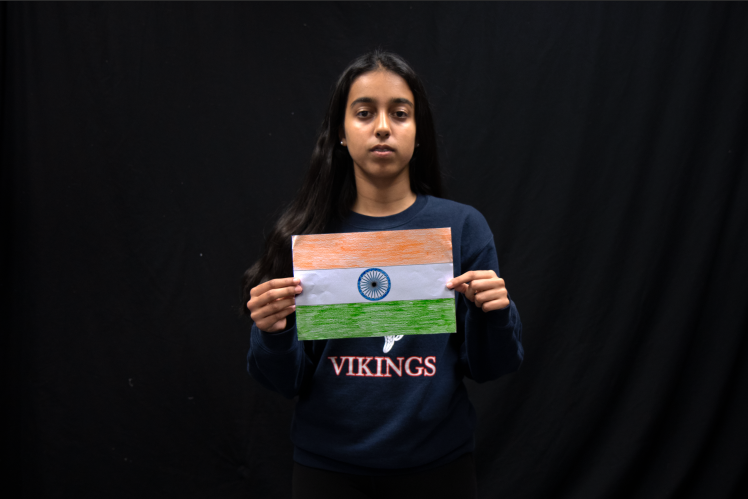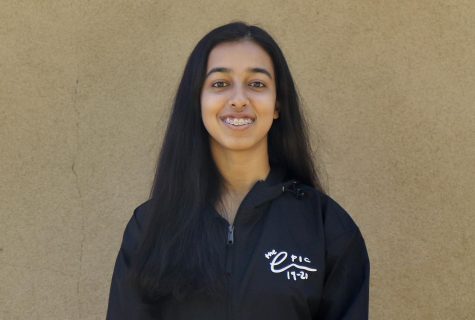2019 Indian Elections: changing democracy
May 3, 2019
As my school bus drove on bumpy lanes in India every morning, I often saw colorful posters endorsing low-level politicians plastered on walls and hung up on poles. Many of the posters simply wished those politicians happy birthday or were messages from the politicians wishing the local neighborhoods and towns for the upcoming festival. As a naive 10-year-old, I did not think much of the posters. But over the years, after learning about the complexities of the Indian political system, I have begun to recognize the hidden power of those gaudy posters.
Since the 2019 Indian general elections began in mid-April, a lot is at stake with regard to the democratic and secularist nature of the country. This year, more than 900 million of the 1.3 billion Indian citizens are registered to vote in the largest democratic election ever, and every voter is looking for a suitable prime minister from the approximately 2,300 registered political parties. The magnitude of this election has made me anxious about the changing definition of democracy in the country, as the use of religious nationalism in the election to attract voters has reached a new high.
Just like how many Indian immigrant parents tried to push Indian-American comedian Hasan Minhaj away from discussing Indian politics in his Netflix show “Patriot Act,” my family has been apprehensive about discussing Indian politics, always telling me to avoid the topic. Even when I lived in India, discussing politics was shunned as it was, and still is, a controversial topic that can get someone in social or legal trouble. The polarized nature of the current political and social climate of the country, which often openly shuns minority populations, forces many to abide by the various parties’ agendas instead of encouraging political discussion.
As I researched about India’s political climate, I discovered that Indian political parties exploit the gullible and devotional nature of much of the Indian population, in order to secure successful elections. For example, the Bharatiya Janata Party (translated as the “Indian People’s Party” or BJP), the party of current Prime Minister Narendra Modi, uses religious undertones in its speeches to persuade voters into believing in its extremist religious agendas.
On the day the 2019 election began, BJP President Amit Shah said, “We will remove every single infiltrator from the country, except [Buddhists], Hindus and Sikhs.” In context to BJP’s past statements, Shah implied that the “infiltrators” are the Muslims and Christians, just because their religions were not created in India though they make up more than 16 percent of the country’s population. The majority of the Indian population follow Hinduism and is very religiously motivated in their daily lives. The politicians appeal to them by preaching religious principles, thus gaining more support.
These crooked tactics infuriate me, as India has historically been a very secular nation and prides itself on this. Only after British India gained independence in 1947 and was divided into three countries based on religion – India has a Hindu majority, while Pakistan and Bangladesh have Muslim majorities – has India become so polarized, especially regarding religion. The upcoming Indian election is banking largely on these polarized, nationalist sentiments that politicians are instigating in the general public. The two major parties, the BJP and the current Indian National Congress, a descendant of the party that helped India gain independence, have partnered up with many other low-level parties that actively try to incite violent feelings against other political parties or religions. Through these partnerships, both parties hope to gain the majority in the elections so they can rule for the next five years.
The strategies used in the current election serve the same purpose as the posters, I saw when I was younger: to gradually brainwash Indian citizens, especially the rural population, into adopting polarized sentiments. Rural citizens, who make up roughly 70 percent of the country’s population and have relatively little exposure to the controversies of political parties, see only those politicians’ posters every day resultantly end up voting for them when elections come around.
Democracy is based on the principle that people choose leaders who they logically see fit, not who they are brainwashed into voting for. Using the posters as a means of propaganda makes a country unable to be a true democracy. Propaganda from parties hinders people’s abilities to choose fit leaders, as such messages cater to the emotions and religious inclinations of the average citizen, taking away the individual’s ability to make logical decisions regarding their country. India is on track to becoming a place where outsiders and people who are deemed “different” will be unwelcome. In this way, parties will completely succeed in suppressing the minority populations’ voices and encouraging hatred against them. India will both suppress the voices of minorities and create a society closed to outsiders; in this way, India’s “democracy” fails to uphold democratic principles.
Culturally, Indians have always been portrayed as a lively, hospitable and accepting people. I am proud of India’s rich and vibrant culture, but, knowing the tactics that politicians use to possess and maintain power, I feel anxious and uncomfortable about the future of Indian politics. When the results of the election are revealed on May 23, it is likely that the election will make the country’s open and temporal identity a vestige of the past.




































































